Alumni Around the World
Year by year, advanced graduate students pass through the School of Theology and the Center for Global Christianity, then go out into the world to teach and do what they have been studying. As they move, the CGCM community grows in engagement through them. They are such a diverse group of people that no one description could possibly do the entire body justice. Instead, news and updates will be regularly provided. Cumulatively, their activities will create a portrait of the CGCM alumni community.
Dance as Metaphor of Cross and Mission in Contexts of Trauma
 The trauma of violence, discrimination, and war continue to mark the lives of countless Christians throughout the globe. Such trauma is particularly acute in contexts where the public life of Christians is threatened and marginalized by the increasing influence of religious radicalism in the public sphere, notably in the Indonesian context of BuSTH alumna Rev. Dr. Septemmy Lakawa, professor of Jakarta Theological Seminary. Dr. Lakawa was a keynote speaker at the 2017 Asia Mission Conference in Yangon, Myanmar. In her speech on October 16th, she emphasized the role of dance in healing from the trauma experienced by Christians who are witnesses to acts of violence.
The trauma of violence, discrimination, and war continue to mark the lives of countless Christians throughout the globe. Such trauma is particularly acute in contexts where the public life of Christians is threatened and marginalized by the increasing influence of religious radicalism in the public sphere, notably in the Indonesian context of BuSTH alumna Rev. Dr. Septemmy Lakawa, professor of Jakarta Theological Seminary. Dr. Lakawa was a keynote speaker at the 2017 Asia Mission Conference in Yangon, Myanmar. In her speech on October 16th, she emphasized the role of dance in healing from the trauma experienced by Christians who are witnesses to acts of violence.
Killing our Children’s Children
Surveying ecological disasters around the world, Visiting Researcher Kapya Kaoma delivered sharp warnings that an earth-theology must be developed, or we will be "killing our children's children." Dr. Kaoma delivered his message during the Gunther Wittenberg Lecture at the University of KwaZulu-Natal Ujamaa Centre in South Africa. His entire lecture has been made through Critical Investigations into Humanitarianism in Africa.
World Christianity and the Fourfold Gospel
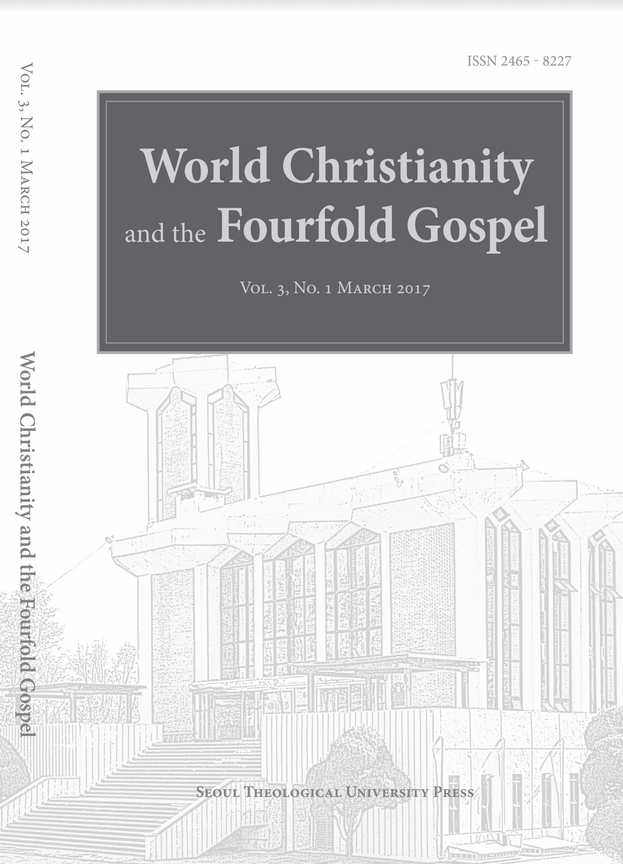 The third issue of World Christianity and the Fourfold Gospel came out in March 2017. Many CGCM alums and faculty associate are involved with this journal—Dr. Yeon-seung Lee as managing editor; Dr. Dana Robert, Dr. Sung-deuk Oak, Dr. Myung-soo Park, and Dr. Brian Clark on the advisory board. Dr. Yeon-seung Lee also contributed an article entitled "Korean Initiative of the Rural Reconstruction by the YMCA in Colonial Korea." Readers are encouraged to submit articles to the journal.
The third issue of World Christianity and the Fourfold Gospel came out in March 2017. Many CGCM alums and faculty associate are involved with this journal—Dr. Yeon-seung Lee as managing editor; Dr. Dana Robert, Dr. Sung-deuk Oak, Dr. Myung-soo Park, and Dr. Brian Clark on the advisory board. Dr. Yeon-seung Lee also contributed an article entitled "Korean Initiative of the Rural Reconstruction by the YMCA in Colonial Korea." Readers are encouraged to submit articles to the journal. 
GRACE Anglican Church in Joondalup
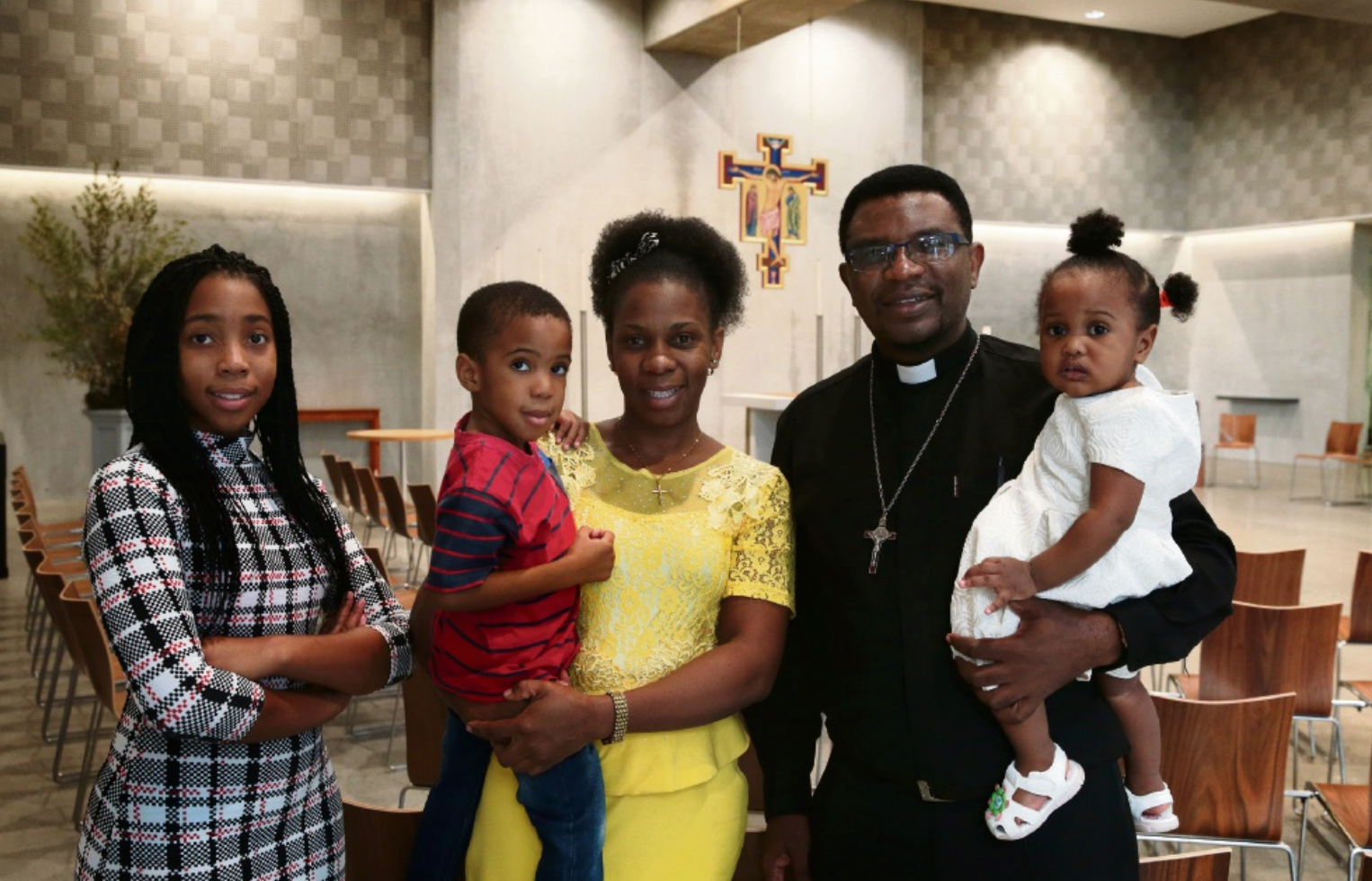 Dr. Gift Makwasha, Boston University School of Theology alumnus, was commissioned as the first full-time priest for GRACE Anglican Church in Joondalup. Dr. Makwasha moved to Perth from Zimbabwe with his family in late February to take up the position. The parish held a commissioning service on March 16 to welcome Dr. Makwasha, performed by Assistant Bishop of Perth Jeremy James. Full article can be found here.
Dr. Gift Makwasha, Boston University School of Theology alumnus, was commissioned as the first full-time priest for GRACE Anglican Church in Joondalup. Dr. Makwasha moved to Perth from Zimbabwe with his family in late February to take up the position. The parish held a commissioning service on March 16 to welcome Dr. Makwasha, performed by Assistant Bishop of Perth Jeremy James. Full article can be found here.
Contemporary Mission Theology

Goals of Frontier Church Planters and Other Missionaries According to the Serampore Form of Agreement
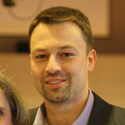
In 1805 the famed missionary trio of William Carey, William Ward, and Joshua Marshman, along with six other men of the British Baptist Missionary Society who were stationed at Serampore, India, set forth for themselves, and a stream of new missionaries arriving from England, eleven “great principles” (as they called them) to explain their commitments and aims. The Serampore Form of Agreement (SFA) articulates a more robust and biblical understanding of the church planter’s life and ministry than typically does the popular contemporary literature on missions that is consumed by US American evangelicals.
Travis Myers, STH alumnus, recently published an article titled "The 'Peculiar Qualifications' and Goals of Frontier Church Planters and Other Missionaries According to the Serampore Form of Agreement (1805)" in Journal of Global Christianity. His article demonstrates Serampore Form of Agreement's early-nineteenth-century signers’ attention to culture learning and avoiding offense, to building rapport and diligent evangelism, to proper doctrine and patient disciple-making, as well as to indigenous churches and missionary oversight. Throughout the article, he suggests several points of application to certain contemporary issues in missions, especially those related to best practices in the field and missionary qualifications.
Books on Korean Protestantism

 Dr. Sung-Deuk Oak, STH alumnus, published two books on the history of early Korean Protestantism for the Korean audience. A New History of Early Korean Protestantism is a critical study of many accepted, yet distorted narratives of early Korean churches up to 1910. It demythologizes historical heroes and criticize renowned historians’ interpretations. Recently Christianity Today Korea chose this book as the best book of the year in history and nominated it for the book of the year.
Dr. Sung-Deuk Oak, STH alumnus, published two books on the history of early Korean Protestantism for the Korean audience. A New History of Early Korean Protestantism is a critical study of many accepted, yet distorted narratives of early Korean churches up to 1910. It demythologizes historical heroes and criticize renowned historians’ interpretations. Recently Christianity Today Korea chose this book as the best book of the year in history and nominated it for the book of the year.
The First Forty-five Events of Early Korean Protestantism presents 45 first figures and events in the early history of Korean Christianity such as the first visiting missionary, the first vernacular Korean Christian tract, the first baptism in Pyongyang, and so on. Oak’s three sourcebooks also come out this January. Sources of Samuel Austin Moffett, vol. 1 (1854-93) and vol. 2 (1894-1900). This ten-volume series compiles all English materials of the first American missionary couple to Pyongyang and translate them into Korean with annotations and photos. Sources of Modern Nursing in Korea, vol. 2 (1910-19) transcribes, translates, and annotates the primary (English, Japanese, and Korean) sources of the nursing work in Korea.
No Other Name: One Couple’s Journey With Cancer
Ed Williamson, STH alumnus, recently published his book No Other Name: One Couple's Journey With Cancer. This is a story of Ed and Loretta Williamson and their look at realistic faith amid modern medicine intertwined in a story of love, pain, triumph, anguish and miracles. Dr. Williamson holds a doctorate in Mission and Evangelism from STH.
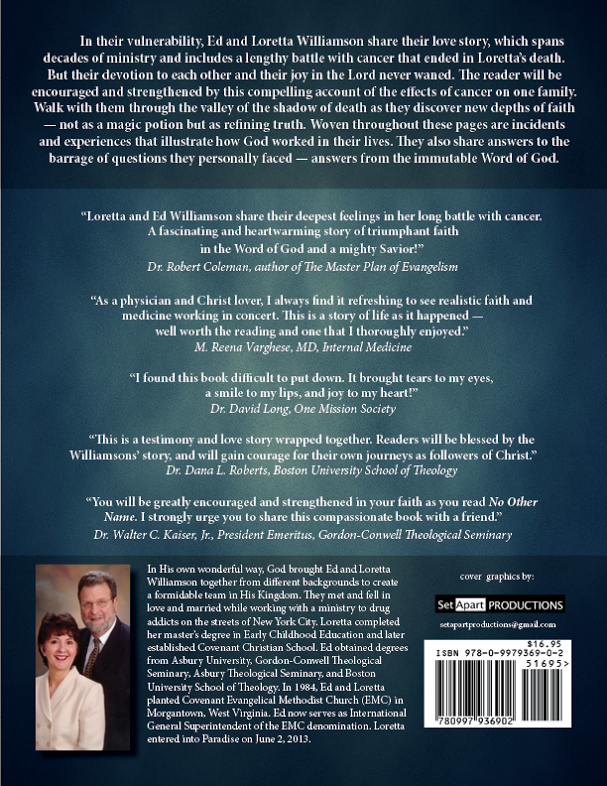
Eastern Fellowship of Professors of Mission Report
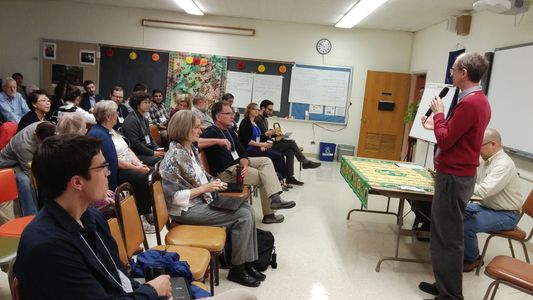 On the weekend of October 21st and 22nd, professors and graduate students representing 18 different religious and educational institutions from the North East and Mid Atlantic United States met at the 99th annual Eastern Fellowship of Professors of Mission. Seeking to survey and understand the current state of missions education in the region, the theme of the conference was “Education for Mission: Current Status and Future Visions.” There were three panels that represented seminaries, undergraduate institutions, and churches, respectively. Panelist in each session addressed the same set of questions from their particular contexts: (1) what are you teaching? (2) what are your teaching objectives? (3) what should we be teaching and why? and (4) how do you see mission education linked with the task of mission service?
On the weekend of October 21st and 22nd, professors and graduate students representing 18 different religious and educational institutions from the North East and Mid Atlantic United States met at the 99th annual Eastern Fellowship of Professors of Mission. Seeking to survey and understand the current state of missions education in the region, the theme of the conference was “Education for Mission: Current Status and Future Visions.” There were three panels that represented seminaries, undergraduate institutions, and churches, respectively. Panelist in each session addressed the same set of questions from their particular contexts: (1) what are you teaching? (2) what are your teaching objectives? (3) what should we be teaching and why? and (4) how do you see mission education linked with the task of mission service?
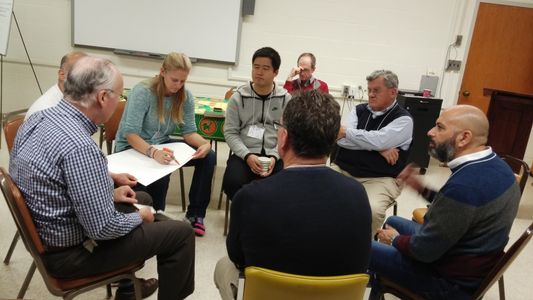 The conversation that ensued was productive and informative. Panelists and attendants alike discussed that as the cultural and religious context of the United States was changing, the demography of the students who sought mission education shifted as well. Moreover, such a shift demanded new starting points and pedagogies for teaching mission theory and practice that fit into the rich pluralistic context that students would inhabit on local, regional, national, and even global levels. One striking feature of the conference was the theological diversity of those who attended. It was encouraging to see attendees from both theologically conservative and liberal backgrounds come together to discuss the important and pressing issue of training mission practitioners. As Dana Robert, Boston University’s Truman Collins Professor of World Christianity and History of Mission, said in her opening remarks, the Eastern Fellowship of Professors of Mission had truly moved beyond the modernist and fundamentalist controversies of the 20th century in order to discern how mission professors and practitioners could faithfully participate in the Mission of God.
The conversation that ensued was productive and informative. Panelists and attendants alike discussed that as the cultural and religious context of the United States was changing, the demography of the students who sought mission education shifted as well. Moreover, such a shift demanded new starting points and pedagogies for teaching mission theory and practice that fit into the rich pluralistic context that students would inhabit on local, regional, national, and even global levels. One striking feature of the conference was the theological diversity of those who attended. It was encouraging to see attendees from both theologically conservative and liberal backgrounds come together to discuss the important and pressing issue of training mission practitioners. As Dana Robert, Boston University’s Truman Collins Professor of World Christianity and History of Mission, said in her opening remarks, the Eastern Fellowship of Professors of Mission had truly moved beyond the modernist and fundamentalist controversies of the 20th century in order to discern how mission professors and practitioners could faithfully participate in the Mission of God.
Report by Jeremy Hegi
Vincent Machozi’s Calling
 Father Vincent Machozi (STH ’15), a priest from the Democratic Republic of the Congo (DRC), was recently killed during his peaceful protest to help end the violence. He operated a website Beni Lubero Online, where he posted photos of victims of violence in the DRC province of North Kivu, as well as reports that often identified the killers as military or government agents. He had hoped that the photos of dead and dismembered bodies would galvanize site visitors to help end the violence. Full article about his calling and martyrdom can be found here.
Father Vincent Machozi (STH ’15), a priest from the Democratic Republic of the Congo (DRC), was recently killed during his peaceful protest to help end the violence. He operated a website Beni Lubero Online, where he posted photos of victims of violence in the DRC province of North Kivu, as well as reports that often identified the killers as military or government agents. He had hoped that the photos of dead and dismembered bodies would galvanize site visitors to help end the violence. Full article about his calling and martyrdom can be found here.